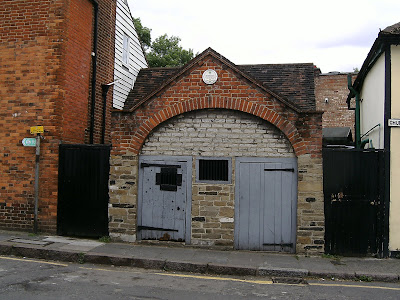 The JC reported a rouge eruv round Clapton but this had been torn down. Nobody would say who by.
The JC reported a rouge eruv round Clapton but this had been torn down. Nobody would say who by. The next bit led through Springfield Park, next to Lea View House a model example of tenant participation.
 the Park cafe comes out well in this shot. A walk by the Lea or Lee River past where Avro aircraft were first flown on Hackney marshes led me to the abandoned Middlesex filter beds. These were filtre beds for water extracted from the river and were closed in the 1980s and left to nature.
the Park cafe comes out well in this shot. A walk by the Lea or Lee River past where Avro aircraft were first flown on Hackney marshes led me to the abandoned Middlesex filter beds. These were filtre beds for water extracted from the river and were closed in the 1980s and left to nature. 
Nature has taken over but it is managed, and there are one or two artworks in the filter beds. The whole place is rather sculptural though. After that a walk further along the River Lea or Lee to where the Lesney factory had been. This was where Matchbox toy cars were built and the developer has called the flats Matchmaker House. Matchbox House would be more apt given the size of the flats.

And speaking of matches I caught a bus to Bow and the former Bryant and May factory, with it's appropriate designs in the brickwork.
 .
.After Bow a walk down the Highway and past the Royal Foundation of St Katherine to Wapping. There in an old hydraulic power station is a work of art called 'making waves. It is a pool of water reflecting a structure which is like an illuminated ball gown. Very pretty.
After a drink in the Captain Kidd near execution dock it was time to go home.

















